Symptoms of a Broken Foot
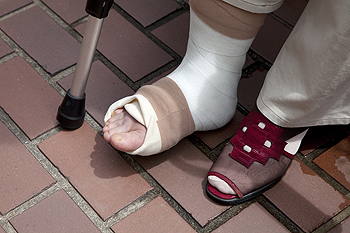 If you have fallen or dropped a heavy object on your foot, the result may be a broken foot. There are typically noticeable symptoms that are associated with this condition, and these may include severe pain and discomfort that is felt while attempting to walk, and possible swelling and bruising. If the fracture is severe, and appears to be dislocated, it may be a result of bones that are out of alignment. Patients who have medical conditions which may include diabetes or peripheral neuropathy, may not notice if their foot is fractured, and this may be a result of a loss of sensation. Once a proper diagnosis is performed, which typically consists of having an X-ray taken, the correct treatment can begin. This may include resting and elevating the foot as often as possible, and wearing a cast or protective boot while the healing process takes place. For more severe fractures, an MRI might be a necessary test to aid in determining the severity of the fracture. If you feel you have broken your foot, it is suggested that you consult with a podiatrist as quickly as possible so the proper treatment can begin.
If you have fallen or dropped a heavy object on your foot, the result may be a broken foot. There are typically noticeable symptoms that are associated with this condition, and these may include severe pain and discomfort that is felt while attempting to walk, and possible swelling and bruising. If the fracture is severe, and appears to be dislocated, it may be a result of bones that are out of alignment. Patients who have medical conditions which may include diabetes or peripheral neuropathy, may not notice if their foot is fractured, and this may be a result of a loss of sensation. Once a proper diagnosis is performed, which typically consists of having an X-ray taken, the correct treatment can begin. This may include resting and elevating the foot as often as possible, and wearing a cast or protective boot while the healing process takes place. For more severe fractures, an MRI might be a necessary test to aid in determining the severity of the fracture. If you feel you have broken your foot, it is suggested that you consult with a podiatrist as quickly as possible so the proper treatment can begin.
A broken foot requires immediate medical attention and treatment. If you need your feet checked, contact Jim Maxka, DPM from South Penn Foot & Ankle Associates. Our doctor can provide the care you need to keep you pain-free and on your feet.
Broken Foot Causes, Symptoms, and Treatment
A broken foot is caused by one of the bones in the foot typically breaking when bended, crushed, or stretched beyond its natural capabilities. Usually the location of the fracture indicates how the break occurred, whether it was through an object, fall, or any other type of injury.
Common Symptoms of Broken Feet:
- Bruising
- Pain
- Redness
- Swelling
- Blue in color
- Numbness
- Cold
- Misshapen
- Cuts
- Deformities
Those that suspect they have a broken foot shoot seek urgent medical attention where a medical professional could diagnose the severity.
Treatment for broken bones varies depending on the cause, severity and location. Some will require the use of splints, casts or crutches while others could even involve surgery to repair the broken bones. Personal care includes the use of ice and keeping the foot stabilized and elevated.
If you have any questions please feel free to contact our office located in Hanover, PA . We offer the newest diagnostic and treatment technologies for all your foot and ankle needs.
Why Preventing Running Injuries Is Important
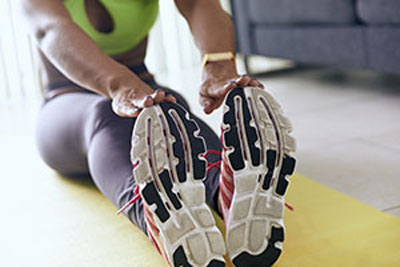 Research has shown that approximately half of all injuries incurred by runners may be prevented by paying attention to your body in addition to taking the proper precautions by stretching the feet and ankles thoroughly before embarking on a run. A condition that is known as Achilles tendinitis may occur as a result of tight calf muscles, and the pain and discomfort this injury may bring may be avoided by building strength in the Achilles tendon and surrounding areas. Additionally, many patients experience an uncomfortable condition that is referred to as plantar fasciitis, and this is characterized by severe pain in the heel area of the foot. This may be prevented by wearing shoes that fit properly and have adequate arch support. If you would like additional information on how to prevent painful running injuries, it is advised to consult with a podiatrist who can properly guide you.
Research has shown that approximately half of all injuries incurred by runners may be prevented by paying attention to your body in addition to taking the proper precautions by stretching the feet and ankles thoroughly before embarking on a run. A condition that is known as Achilles tendinitis may occur as a result of tight calf muscles, and the pain and discomfort this injury may bring may be avoided by building strength in the Achilles tendon and surrounding areas. Additionally, many patients experience an uncomfortable condition that is referred to as plantar fasciitis, and this is characterized by severe pain in the heel area of the foot. This may be prevented by wearing shoes that fit properly and have adequate arch support. If you would like additional information on how to prevent painful running injuries, it is advised to consult with a podiatrist who can properly guide you.
All runners should take extra precaution when trying to avoid injury. If you have any concerns about your feet, contact Jim Maxka, DPM of South Penn Foot & Ankle Associates. Our doctor will treat your foot and ankle needs.
How to Prevent Running Injuries
There are a lot of mistakes a runner can make prior to a workout that can induce injury. A lot of athletes tend to overstretch before running, instead of saving those workouts for a post-run routine. Deep lunges and hand-to-toe hamstring pulls should be performed after a workout instead of during a warmup. Another common mistake is jumping into an intense routine before your body is physically prepared for it. You should try to ease your way into long-distance running instead of forcing yourself to rush into it.
More Tips for Preventing Injury
- Incorporate Strength Training into Workouts - This will help improve the body’s overall athleticism
- Improve and Maintain Your Flexibility – Stretching everyday will help improve overall performance
- “Warm Up” Before Running and “Cool Down” Afterward – A warm up of 5-10 minutes helps get rid of lactic acid in the muscles and prevents delayed muscle soreness
- Cross-Training is Crucial
- Wear Proper Running Shoes
- Have a Formal Gait Analysis – Poor biomechanics can easily cause injury
If you have any questions, please feel free to contact our office located in Hanover, PA . We offer the newest diagnostic and treatment technologies for all your foot care needs.
Possible Treatment of Morton’s Neuroma
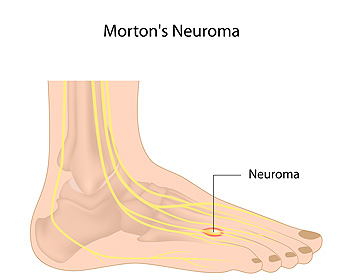 The painful and uncomfortable foot condition that is known as Morton’s neuroma will typically affect the area between the third and fourth toes on the sole of the foot. The pain may originate from a swollen nerve in the ball of the foot and may be exaggerated by wearing specific types of shoes that may include high heels. There may be available treatment options that can include steroid injections, ingesting painkillers, or by simply changing the footwear. If the symptoms appear to be severe, surgery may be considered if other treatments have been unsuccessful. This type of surgery generally includes removing the pressure and affected nerve, which can be accomplished by a few different methods. It is strongly advised to consult with a podiatrist, so a proper diagnosis and correct treatment can be determined.
The painful and uncomfortable foot condition that is known as Morton’s neuroma will typically affect the area between the third and fourth toes on the sole of the foot. The pain may originate from a swollen nerve in the ball of the foot and may be exaggerated by wearing specific types of shoes that may include high heels. There may be available treatment options that can include steroid injections, ingesting painkillers, or by simply changing the footwear. If the symptoms appear to be severe, surgery may be considered if other treatments have been unsuccessful. This type of surgery generally includes removing the pressure and affected nerve, which can be accomplished by a few different methods. It is strongly advised to consult with a podiatrist, so a proper diagnosis and correct treatment can be determined.
Morton’s neuroma is a very uncomfortable condition to live with. If you think you have Morton’s neuroma, contact Jim Maxka, DPM of South Penn Foot & Ankle Associates. Our doctor will attend to all of your foot care needs and answer any of your related questions.
Morton’s Neuroma
Morton's neuroma is a painful foot condition that commonly affects the areas between the second and third or third and fourth toe, although other areas of the foot are also susceptible. Morton’s neuroma is caused by an inflamed nerve in the foot that is being squeezed and aggravated by surrounding bones.
What Increases the Chances of Having Morton’s Neuroma?
- Ill-fitting high heels or shoes that add pressure to the toe or foot
- Jogging, running or any sport that involves constant impact to the foot
- Flat feet, bunions, and any other foot deformities
Morton’s neuroma is a very treatable condition. Orthotics and shoe inserts can often be used to alleviate the pain on the forefront of the feet. In more severe cases, corticosteroids can also be prescribed. In order to figure out the best treatment for your neuroma, it’s recommended to seek the care of a podiatrist who can diagnose your condition and provide different treatment options.
If you have any questions, please feel free to contact our office located in Hanover, PA . We offer the newest diagnostic and treatment technologies for all your foot care needs.
Barefoot Babies
 The foot is comprised of several bones, tendons, muscles, and ligaments, which provide us with the ability to balance and stand upright. When babies are born, their feet consist of cartilage and will gradually form into bones as the child gets older, which is typically at eight years of age. Research has shown the importance of babies going barefoot until walking commences, which is generally at approximately twelve months old. This is suggested because the feet can properly stretch without wearing shoes, which may promote stronger foot muscles. Once your child begins to walk, it is important to measure their feet properly, which will determine the correct size shoe to purchase. These shoes should consist of a lightweight and flexible material, and any heel is strongly advised against. If you would like additional information about the health of your child’s foot, please speak with a podiatrist.
The foot is comprised of several bones, tendons, muscles, and ligaments, which provide us with the ability to balance and stand upright. When babies are born, their feet consist of cartilage and will gradually form into bones as the child gets older, which is typically at eight years of age. Research has shown the importance of babies going barefoot until walking commences, which is generally at approximately twelve months old. This is suggested because the feet can properly stretch without wearing shoes, which may promote stronger foot muscles. Once your child begins to walk, it is important to measure their feet properly, which will determine the correct size shoe to purchase. These shoes should consist of a lightweight and flexible material, and any heel is strongly advised against. If you would like additional information about the health of your child’s foot, please speak with a podiatrist.
Making sure that your children maintain good foot health is very important as they grow. If you have any questions, contact Jim Maxka, DPM of South Penn Foot & Ankle Associates. Our doctor can provide the care you need to keep you pain-free and on your feet.
Keeping Children's Feet Healthy
Having healthy feet during childhood can help prevent medical problems later in life, namely in the back and legs. As children grow, their feet require different types of care. Here are some things to consider...
Although babies do not walk yet, it is still very important to take care of their feet.
Avoid putting tight shoes or socks on his or her feet.
Allow the baby to stretch and kick his or her feet to feel comfortable.
As a toddler, kids are now on the move and begin to develop differently. At this age, toddlers are getting a feel for walking, so don’t be alarmed if your toddler is unsteady or ‘walks funny’.
As your child gets older, it is important to teach them how to take care of their feet.
Show them proper hygiene to prevent infections such as fungus.
Be watchful for any pain or injury.
Have all injuries checked by a doctor as soon as possible.
Comfortable, protective shoes should always be worn, especially at play.
If you have any questions please feel free to contact our office located in Hanover, PA . We offer the newest diagnostic and treatment technologies for all your foot and ankle needs.
Children and Ingrown Toenails
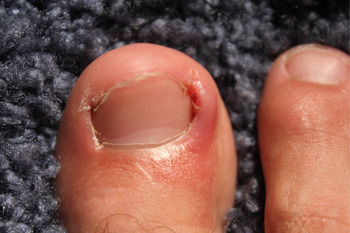 If your child complains of an irritation on the side of her big toe, they may have what is known as an ingrown toenail. The typical reasons why this condition may occur can be from wearing shoes that do not fit correctly and provide inadequate room for the toes to move freely in, and toenails that are trimmed improperly. Additionally, some children may pick at their toenails, and this type of action may lead to developing ingrown toenails. Some of the uncomfortable symptoms that are associated with this condition may be tenderness around the edge of the toenail, swelling and redness. If this ailment is not treated promptly, a painful infection may occur when bacteria enters the body through small cuts in the skin. It’s important to obtain a prompt and proper diagnosis, and this can be accomplished by consulting a podiatrist who can also assist in beginning correct treatment.
If your child complains of an irritation on the side of her big toe, they may have what is known as an ingrown toenail. The typical reasons why this condition may occur can be from wearing shoes that do not fit correctly and provide inadequate room for the toes to move freely in, and toenails that are trimmed improperly. Additionally, some children may pick at their toenails, and this type of action may lead to developing ingrown toenails. Some of the uncomfortable symptoms that are associated with this condition may be tenderness around the edge of the toenail, swelling and redness. If this ailment is not treated promptly, a painful infection may occur when bacteria enters the body through small cuts in the skin. It’s important to obtain a prompt and proper diagnosis, and this can be accomplished by consulting a podiatrist who can also assist in beginning correct treatment.
Ingrown toenails can become painful if they are not treated properly. For more information about ingrown toenails, contact Jim Maxka, DPM of South Penn Foot & Ankle Associates. Our doctor can provide the care you need to keep you pain-free and on your feet.
Ingrown Toenails
Ingrown toenails occur when a toenail grows sideways into the bed of the nail, causing pain, swelling, and possibly infection.
Causes
- Bacterial infections
- Improper nail cutting such as cutting it too short or not straight across
- Trauma to the toe, such as stubbing, which causes the nail to grow back irregularly
- Ill-fitting shoes that bunch the toes too close together
- Genetic predisposition
Prevention
Because ingrown toenails are not something found outside of shoe-wearing cultures, going barefoot as often as possible will decrease the likeliness of developing ingrown toenails. Wearing proper fitting shoes and using proper cutting techniques will also help decrease your risk of developing ingrown toenails.
Treatment
Ingrown toenails are a very treatable foot condition. In minor cases, soaking the affected area in salt or antibacterial soaps will not only help with the ingrown nail itself, but also help prevent any infections from occurring. In more severe cases, surgery is an option. In either case, speaking to your podiatrist about this condition will help you get a better understanding of specific treatment options that are right for you.
If you have any questions please feel free to contact our office located in Hanover, PA . We offer the newest diagnostic and treatment technologies for all your foot and ankle needs.
Most Babies Are Born with Flat Feet
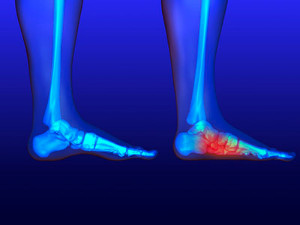 The foot condition that is referred to as flat feet simply indicates the feet are flatter on the bottom, which enables the foot to fully touch the ground while standing. Research has shown that most babies are born with flat feet, and the arch will generally develop as the aging process occurs. There may be several reasons why adults may develop flat feet, and these may include injuries that the feet may endure, wear and tear that may happen as a result of age, or possibly from a genetic trait. There may be additional factors that may contribute to flat feet, including medical ailments such as diabetes and obesity. Patients who experience this condition may notice pain in the heel or arch area of the feet, swelling in the ankle and surrounding area, or increased foot pain as activities are pursued. If you are born with or have developed flat feet, it is advised to seek the counsel of a podiatrist who can discuss proper treatment options with you.
The foot condition that is referred to as flat feet simply indicates the feet are flatter on the bottom, which enables the foot to fully touch the ground while standing. Research has shown that most babies are born with flat feet, and the arch will generally develop as the aging process occurs. There may be several reasons why adults may develop flat feet, and these may include injuries that the feet may endure, wear and tear that may happen as a result of age, or possibly from a genetic trait. There may be additional factors that may contribute to flat feet, including medical ailments such as diabetes and obesity. Patients who experience this condition may notice pain in the heel or arch area of the feet, swelling in the ankle and surrounding area, or increased foot pain as activities are pursued. If you are born with or have developed flat feet, it is advised to seek the counsel of a podiatrist who can discuss proper treatment options with you.
Flatfoot is a condition many people suffer from. If you have flat feet, contact Jim Maxka, DPM from South Penn Foot & Ankle Associates. Our doctor will treat your foot and ankle needs.
What Are Flat Feet?
Flatfoot is a condition in which the arch of the foot is depressed and the sole of the foot is almost completely in contact with the ground. About 20-30% of the population generally has flat feet because their arches never formed during growth.
Conditions & Problems:
Having flat feet makes it difficult to run or walk because of the stress placed on the ankles.
Alignment – The general alignment of your legs can be disrupted, because the ankles move inward which can cause major discomfort.
Knees – If you have complications with your knees, flat feet can be a contributor to arthritis in that area.
Symptoms
- Pain around the heel or arch area
- Trouble standing on the tip toe
- Swelling around the inside of the ankle
- Flat look to one or both feet
- Having your shoes feel uneven when worn
Treatment
If you are experiencing pain and stress on the foot you may weaken the posterior tibial tendon, which runs around the inside of the ankle.
If you have any questions please feel free to contact our office located in Hanover, PA . We offer the newest diagnostic and treatment technologies for all your foot and ankle needs.
Flat Feet
Flatfoot is a condition that occurs when the arches on the foot are flattened, which allows the soles of the feet to touch the floor. Flatfoot is a common condition and it is usually painless.
Throughout childhood, most people begin to develop arches in their feet, however, some do not. Those who do not develop arches are left with flatfoot. The pain associated with flat feet is usually at its worse when engaging in activity. Another symptom that may occur with those who have this condition is swelling along the inside of the ankle.
It is also possible to have flexible flatfoot. Flexible flatfoot occurs when the arch is visible while sitting or standing on the tiptoes, but it disappears when standing. People who have flexible flatfoot are often children and most outgrow it without any problems.
There are some risk factors that may make you more likely to develop flatfoot. Those who have diabetes and rheumatoid arthritis have an increased risk of flatfoot development. Other factors include aging and obesity.
Diagnosis for flat feet is usually done by a series of tests by your podiatrist. Your podiatrist will typically try an x-ray, CT scan, ultrasound, or MRI on the feet. Treatment is usually not necessary for flat foot unless it causes pain. However, therapy is often used for those who experience pain in their flat feet. Some other suggested treatment options are arch supports, stretching exercises, and supportive shoes.
What is a Podiatrist?
 People who are interested in pursuing a podiatric career are attracted to learning about the treatments of foot conditions and the compassion in treating patients with specific foot disorders. Doctors who are involved in this type of medicine may perform surgery, prescribe medications, and fit for custom-made orthotics. Research has shown that certain diseases may originally be seen in the feet, and this type of medical professional may often recognize these potentially serious health concerns. Many podiatrists have the choice to practice in hospitals, work in health departments, or to open their own podiatric office, which may be enticing if having a flexible work schedule is desired. If you feel you would like additional information about pursuing a career in this medical field, please speak to a podiatrist who can answer any questions you may have.
People who are interested in pursuing a podiatric career are attracted to learning about the treatments of foot conditions and the compassion in treating patients with specific foot disorders. Doctors who are involved in this type of medicine may perform surgery, prescribe medications, and fit for custom-made orthotics. Research has shown that certain diseases may originally be seen in the feet, and this type of medical professional may often recognize these potentially serious health concerns. Many podiatrists have the choice to practice in hospitals, work in health departments, or to open their own podiatric office, which may be enticing if having a flexible work schedule is desired. If you feel you would like additional information about pursuing a career in this medical field, please speak to a podiatrist who can answer any questions you may have.
If you are experiencing pain in the feet or ankles, don’t join the stubborn majority refusing treatment. Feel free to contact Jim Maxka, DPM from South Penn Foot & Ankle Associates. Our doctor can provide the care you need to keep you pain-free and on your feet.
What Is a Podiatrist?
Someone would seek the care of a podiatrist if they have suffered a foot injury or have common foot ailments such as heal spurs, bunions, arch problems, deformities, ingrown toenails, corns, foot and ankle problems, etc.
Podiatric Treatment
A podiatrist will treat the problematic areas of the feet, ankle or lower leg by prescribing the following:
- Physical therapy
- Drugs
- Orthotic inserts or soles
- Surgery on lower extremity fractures
A common podiatric procedure a podiatrist will use is a scanner or force plate which will allow the podiatrist to know the designs of orthotics. Patients are then told to follow a series of tasks to complete the treatment. The computer will scan the foot a see which areas show weight distribution and pressure points. The podiatrist will read the analysis and then determine which treatment plans are available.
If you have any questions please feel free to contact our office located in Hanover, PA . We offer the newest diagnostic and treatment technologies for all your foot and ankle needs.
Uncomfortable Heel Pain and Plantar Fasciitis
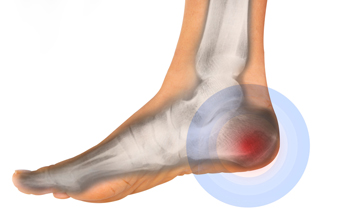 The portion of the ligament that connects the toes to the heel bone is referred to as the plantar fascia. If this tissue should become inflamed, a condition that is known as plantar fasciitis may develop. This uncomfortable and painful ailment may occur as a result of having high arches in the feet, being overweight, or from wearing shoes that do not fit correctly. Typical symptoms of this condition may include pain and stiffness in the heel area as the first steps are taken after sleeping, and the pain may increase in the foot as the day progresses. After a proper diagnosis is completed, which generally consists of having an X-ray taken, it’s important to consult with a podiatrist to begin correct treatment. These may include learning how to perform correct stretches that will benefit the feet and ankles, in addition to wearing proper footwear.
The portion of the ligament that connects the toes to the heel bone is referred to as the plantar fascia. If this tissue should become inflamed, a condition that is known as plantar fasciitis may develop. This uncomfortable and painful ailment may occur as a result of having high arches in the feet, being overweight, or from wearing shoes that do not fit correctly. Typical symptoms of this condition may include pain and stiffness in the heel area as the first steps are taken after sleeping, and the pain may increase in the foot as the day progresses. After a proper diagnosis is completed, which generally consists of having an X-ray taken, it’s important to consult with a podiatrist to begin correct treatment. These may include learning how to perform correct stretches that will benefit the feet and ankles, in addition to wearing proper footwear.
Plantar fasciitis is a common foot condition that is often caused by a strain injury. If you are experiencing heel pain or symptoms of plantar fasciitis, contact Jim Maxka, DPM from South Penn Foot & Ankle Associates. Our doctor can provide the care you need to keep you pain-free and on your feet.
What Is Plantar Fasciitis?
Plantar fasciitis is one of the most common causes of heel pain. The plantar fascia is a ligament that connects your heel to the front of your foot. When this ligament becomes inflamed, plantar fasciitis is the result. If you have plantar fasciitis you will have a stabbing pain that usually occurs with your first steps in the morning. As the day progresses and you walk around more, this pain will start to disappear, but it will return after long periods of standing or sitting.
What Causes Plantar Fasciitis?
- Excessive running
- Having high arches in your feet
- Other foot issues such as flat feet
- Pregnancy (due to the sudden weight gain)
- Being on your feet very often
There are some risk factors that may make you more likely to develop plantar fasciitis compared to others. The condition most commonly affects adults between the ages of 40 and 60. It also tends to affect people who are obese because the extra pounds result in extra stress being placed on the plantar fascia.
Prevention
- Take good care of your feet – Wear shoes that have good arch support and heel cushioning.
- Maintain a healthy weight
- If you are a runner, alternate running with other sports that won’t cause heel pain
There are a variety of treatment options available for plantar fasciitis along with the pain that accompanies it. Additionally, physical therapy is a very important component in the treatment process. It is important that you meet with your podiatrist to determine which treatment option is best for you.
If you have any questions, please feel free to contact our office located in Hanover, PA . We offer the newest diagnostic and treatment technologies for all your foot care needs.
Causes of An Achilles Tendon Injury
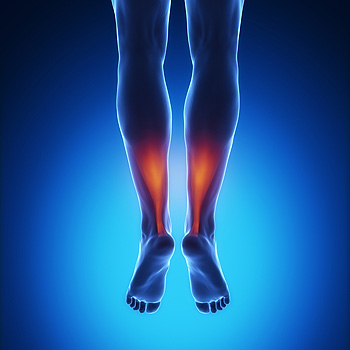 The Achilles tendon is located in the back of the calf on your leg. It is considered to be the largest tendon in the body, and its purpose is to connect the heel bone to the calf muscles. If this tendon becomes injured, severe pain and discomfort is typically experienced. If this should occur, common activities such as walking, running, and jumping may be extremely difficult to perform. The pain associated with these activities is often characterized by a sharp pain in the back of the ankle. There may be several reasons for this injury to occur, which may include suddenly pushing off the feet during any type of jumping activity, overstretching the tendon while instinctively protecting the body during a fall, or from unexpectedly stepping off a curb. If you feel you have incurred an Achilles tendon injury, it’s suggested to speak with a podiatrist as quickly as possible to discuss proper treatment techniques.
The Achilles tendon is located in the back of the calf on your leg. It is considered to be the largest tendon in the body, and its purpose is to connect the heel bone to the calf muscles. If this tendon becomes injured, severe pain and discomfort is typically experienced. If this should occur, common activities such as walking, running, and jumping may be extremely difficult to perform. The pain associated with these activities is often characterized by a sharp pain in the back of the ankle. There may be several reasons for this injury to occur, which may include suddenly pushing off the feet during any type of jumping activity, overstretching the tendon while instinctively protecting the body during a fall, or from unexpectedly stepping off a curb. If you feel you have incurred an Achilles tendon injury, it’s suggested to speak with a podiatrist as quickly as possible to discuss proper treatment techniques.
Achilles tendon injuries need immediate attention to avoid future complications. If you have any concerns, contact Jim Maxka, DPM of South Penn Foot & Ankle Associates. Our doctor can provide the care you need to keep you pain-free and on your feet.
What Is the Achilles Tendon?
The Achilles tendon is a tendon that connects the lower leg muscles and calf to the heel of the foot. It is the strongest tendon in the human body and is essential for making movement possible. Because this tendon is such an integral part of the body, any injuries to it can create immense difficulties and should immediately be presented to a doctor.
What Are the Symptoms of an Achilles Tendon Injury?
There are various types of injuries that can affect the Achilles tendon. The two most common injuries are Achilles tendinitis and ruptures of the tendon.
Achilles Tendinitis Symptoms
- Inflammation
- Dull to severe pain
- Increased blood flow to the tendon
- Thickening of the tendon
Rupture Symptoms
- Extreme pain and swelling in the foot
- Total immobility
Treatment and Prevention
Achilles tendon injuries are diagnosed by a thorough physical evaluation, which can include an MRI. Treatment involves rest, physical therapy, and in some cases, surgery. However, various preventative measures can be taken to avoid these injuries, such as:
- Thorough stretching of the tendon before and after exercise
- Strengthening exercises like calf raises, squats, leg curls, leg extensions, leg raises, lunges, and leg presses
If you have any questions please feel free to contact our office located in Hanover, PA . We offer the newest diagnostic tools and technology to treat your foot and ankle needs.









